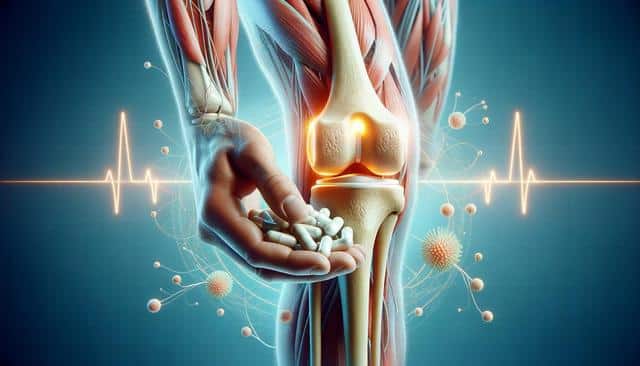
Understanding Painkillers for Knee Pain Relief
Common Causes of Knee Pain and When to Use Painkillers
Knee pain can arise from various conditions, including injuries, arthritis, overuse, and underlying medical issues. The decision to use painkillers often depends on the cause and severity of the discomfort. For minor strains or temporary inflammation, over-the-counter medications may be sufficient. However, chronic or persistent pain might require a more comprehensive approach, including stronger medications or alternative therapies.
Some frequent causes of knee pain include:
- Osteoarthritis – wear and tear of the joint cartilage
- Rheumatoid arthritis – an autoimmune condition causing joint inflammation
- Tendonitis – inflammation of the tendons around the knee
- Bursitis – swelling of the bursae, fluid-filled sacs that cushion the joint
- Ligament injuries – such as ACL or MCL tears from sports or accidents
Identifying the root cause is essential before selecting the appropriate pain management option. Painkillers can help reduce swelling, inflammation, and discomfort, but they are not a cure. It’s important to monitor symptoms and consult a healthcare provider if pain persists or worsens over time.
Types of Over-the-Counter Painkillers for Knee Pain
For many individuals experiencing mild to moderate knee pain, non-prescription medications offer a convenient and accessible solution. Two of the most common over-the-counter (OTC) painkillers are ibuprofen and acetaminophen. Both are widely used but work in slightly different ways.
- Ibuprofen: A nonsteroidal anti-inflammatory drug (NSAID) that reduces inflammation and pain. Often used for conditions involving swelling, such as arthritis or injury-related pain.
- Acetaminophen: Effective at reducing pain and fever but does not have anti-inflammatory properties. Suitable for individuals who cannot tolerate NSAIDs.
Topical analgesics are another OTC option. These creams and gels are applied directly to the skin over the painful area and may contain ingredients like menthol, capsaicin, or salicylates. They are particularly useful for those who prefer not to take oral medications or who experience side effects from pills.
Always follow dosage instructions carefully and be aware of potential interactions with other medications or underlying health conditions. While OTC painkillers can be helpful, they should be used responsibly and not as a long-term solution without medical guidance.
Prescription Medications for More Severe Knee Pain
When OTC painkillers are not enough to manage knee pain, doctors may prescribe stronger medications. These are generally reserved for individuals with moderate to severe pain, chronic conditions, or after surgical procedures. Prescription options may include more potent NSAIDs, corticosteroids, or even certain antidepressants that help manage chronic pain syndromes.
Common prescription treatments for knee pain include:
- Stronger NSAIDs: Such as diclofenac or celecoxib, which offer more potent anti-inflammatory effects than OTC options.
- Corticosteroid injections: Delivered directly into the knee joint to reduce inflammation for conditions like osteoarthritis.
- Hyaluronic acid injections: Used to lubricate the knee joint, often helpful in treating osteoarthritis.
- Opioids: Prescribed in rare cases and for short-term use due to the risk of dependence and side effects.
These treatments are typically recommended when other strategies have failed or when immediate relief is necessary. It’s essential to discuss the potential risks and benefits of prescription medications with a healthcare provider to ensure they fit your specific needs and overall health profile.
Complementary Approaches to Painkiller Use
Painkillers can be effective in reducing knee pain, but they often work best when combined with other treatment methods. Physical therapy, lifestyle changes, and assistive devices can help enhance the effectiveness of medications and may even reduce the need for long-term drug use.
Some complementary approaches include:
- Physical therapy: Strengthening the muscles around the knee can improve stability and reduce stress on the joint.
- Weight management: Maintaining a healthy weight can lessen the load on the knees and alleviate pressure-related pain.
- Supportive devices: Braces, sleeves, or orthotics can provide added support and help with alignment.
- Low-impact exercises: Activities like swimming or cycling can improve joint flexibility and mobility without putting extra strain on the knees.
Combining these practices with painkillers allows individuals to address both the symptoms and the underlying causes of knee discomfort. A multidisciplinary approach often leads to better outcomes and improved quality of life.
When to Seek Medical Advice for Knee Pain
While painkillers are a helpful tool, it’s important to recognize when knee pain requires professional evaluation. Ignoring persistent symptoms or relying exclusively on medication can lead to worsening conditions or mask more serious issues.
Consult a doctor if you experience any of the following:
- Severe swelling or inflammation that does not improve
- Inability to bear weight on the knee
- Persistent or worsening pain despite medication
- Visible deformities or instability in the joint
- Signs of infection such as redness, warmth, or fever
Early diagnosis and treatment can prevent further damage and help identify the most effective treatment plan. Whether your pain is due to injury, arthritis, or another condition, a tailored approach based on medical advice ensures the safest and most effective use of painkillers and other interventions.


